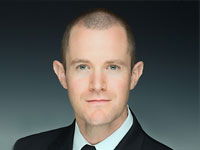|
Psychiatric Impact of COVID-19 May Show Up Long After First Wave of Infections, Expert Says
 | |
Responding to the ongoing disaster that is the COVID-19 pandemic will be “a marathon, not a sprint,” said Joshua Morganstein, M.D., chair of the APA Committee on Psychiatric Dimensions of Disasters, at the APA Spring Highlights Meeting this past weekend. He is a Captain in the U.S. Public Health Service as well as an associate professor and assistant chair of the Department of Psychiatry at the Uniformed Services University of the Health Sciences.
As with other disasters, the psychiatric morbidities associated with the pandemic are likely to show up well after the first wave of this public health disaster has subsided. “The psychiatric and behavioral impacts of disasters are experienced by more people over a greater geography, across a much longer period of time than all other medical effects combined,” Morganstein said. “If history is any predictor, we should expect a significant tail of mental health needs that extend for a considerable period of time after this event.”
He advised physicians to have a “battle buddy”—a trusted friend or companion who is sharing the experience of responding to this challenge and who can be a reminder of hope and the need to care for oneself. “It’s important to gently remind ourselves that self-care is a critical issue for our patients, our colleagues, and for ourselves,” he said. “Sleep, regular meals, staying hydrated, and exercise improve decision-making and can strengthen our immune system. These are benefits we can all use right now.”
|